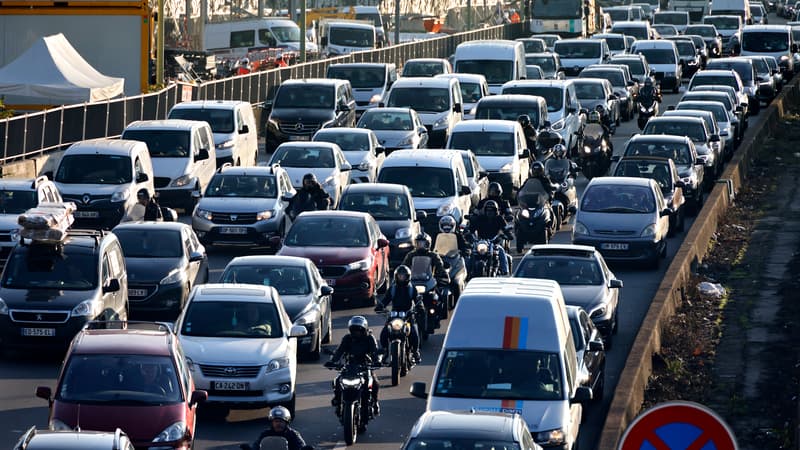Another month and a half. A decree published this Thursday extends until September 15 the experimentation of traffic between lanes for two-wheeled vehicles in the 21 departments where it was implemented. Therefore, this extension refers, according to the press release of the Ministry of Transport:
- the departments of the Île-de-France region, namely Paris, Hauts-de-Seine, Seine-Saint-Denis, Val-de-Marne, Seine-et-Marne, Yvelines, Essonne and Val-d’Oise,
- the Rhône and the metropolis of Lyon,
- The departments of the Mediterranean arc: Alpes-Maritimes, Var, Bouches-du-Rhône, Drôme, Vaucluse, Hérault, Pyrénées-Orientales,
- Haute Garonne,
- the gironde,
- Isère,
- the Loire Atlantique,
- the North.
Launched on August 2, 2021, this test project was to last three years, until August 2, 2024. Pending the completion of the evaluation report for this large-scale test, the State chose to extend the experimentation by a few weeks.
Circulation between queues: what rules?
Reversing is only permitted on certain roads: “highways and dual carriageways separated by a median strip and with at least two lanes each, where the maximum authorised speed is greater than or equal to 70 km/h,” specifies Road Safety.
To get back on track, two-wheeled drivers must not exceed 50 km/h and cannot travel 30 km/h faster than the vehicles they are overtaking, in order to avoid excessively large speed differences.
It is prohibited to overtake another vehicle that is splitting in the queue. This overtaking may only be done in the lanes located furthest to the left.
Traffic is suspended between queues in the Olympic lanes
The decree, however, contains a small twist: the Olympic lanes, these 185 kilometres of lanes reserved for officials, taxis and car-sharing people in the Île-de-France during the Games, will be banned from interline spacing. This ban comes into force from 15 July, i.e. next Monday.
The official “Anticipate the Games” website lists the routes affected by an Olympic route, such as the A1 between Porte de la Chapelle in the north of Paris and Roissy-Charles Gaulle airport, the RN13 between Porte Maillot and La Défense or again the ring road linking Porte de Vanves to Bercy passing through the north of Paris (details can be found here).
This extended experiment is the second on inter-line traffic. The first, carried out between 2016 and 2021, did not allow a decision to be taken to authorise or definitively ban this practice, which has become part of drivers’ habits, particularly in urban areas.
At the launch of the current experiment, the inter-ministerial delegate for road safety of Alors, Marie Gautier-Melleray, thus sought to “try to find the ways to make this practice safer for two wheels and all other users of it.” road”. This is what the report currently being finalised by Cerema, the transport organisation, is expected to determine.
Source: BFM TV


